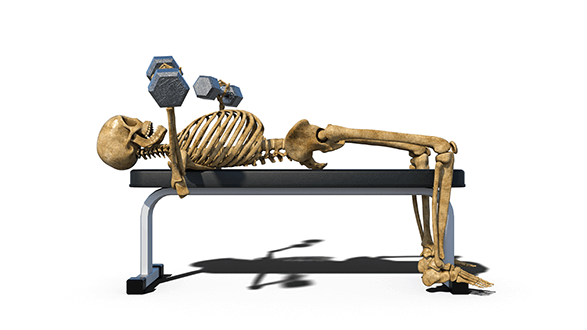June 22, 2021
The Brain-Bone Nexus

By Ram Rao, Ph.D., Principal Research Scientist for Apollo Health
In the previous newsletter, I mentioned the importance of exercise and the ill effects of prolonged sitting. Many people are resistant to the concept of daily exercise, believing it to be an unenjoyable activity or primarily for young people and something “extra” you must do for weight management. Some people even believe that older people should not exercise as it could exacerbate bone loss or increase the risk of fractures. Unfortunately, only about ten percent of the population above sixty-five engages in some form of a regular physical exercise regimen. Exercise protects all parts of the body and brain. In general, aerobics, weight-bearing endurance exercise, resistance exercise, exercises for stability, and exercises that improve balance, strengthen the neural connections, bones, muscles, joints, and vertebrae. The concept of “use it or lose it” applies not only to the physical body but also to the nerve pathways and connections in the brain. Researchers are not surprised to observe that people who have a daily physical exercise regimen display better cognitive skills, strong mental immunity, and a resilient brain.
When we talk about bones and/or joints, we are referring to the skeletal system of the body. The skeletal system, which comprises all the bones and joints in the body, provides structural support and is also a storehouse for calcium and phosphate. Up until now, it was assumed that the skeletal system is an inert calcified structure that only provides a structural framework to prevent the body from collapsing. But thanks to some groundbreaking work, we now know that there’s more to the bones than just the support structure. Recent research studies now point to the skeletal system as an endocrine organ responsible for secreting osteocalcin. Osteocalcin is primarily involved in bone-building, bone mineralization, and maintaining calcium ion levels. The bones trigger the release of osteocalcin markedly during exercise.
Recent studies now show that osteocalcin acts as a hormone and travels to distant organs like the pancreas to release more insulin, to the adipose tissue to release adiponectin, and the testes for testosterone production. Additionally, osteocalcin has wide-ranging effects on the brain as well. Researchers noticed that animals that had been engineered to lack osteocalcin appeared too docile, less rebellious, anxious, depressed, and displayed memory issues suggesting that the bone via osteocalcin plays a direct role in memory, moods, and brain resilience. When the animals were infused with osteocalcin, their moods improved, and their performance on memory tests became normal. Furthermore, osteocalcin from pregnant animals crossed the placenta and triggered the development and architecture of the fetus’s brain. Simply put, the bones communicated with the neurons and shaped the brain even before birth.
So what might the bone-brain nexus mean for human health? First, we know that our skeletal system degenerates concomitantly with a reduction in bone mass as we age. Additionally, aging also brings with it memory and cognitive loss, and emotional turbulence. While all these changes were considered to be separate and independent effects of old age, it now appears that these age-associated degenerative events in the physical body, emotional imbalance, and memory losses may actually be related and interconnected, and osteocalcin may be one of the molecules cementing these processes.
So now you must be curious to know if we need to start taking osteocalcin to protect ourselves from age-associated skeletal degeneration or memory and cognitive decline. Before you walk/sprint to the nearest pharmacy for a dose of synthetic osteocalcin, think of another attractive and natural alternative route to boost the bone-brain connection. Research studies show that the best thing to do to strengthen the bone and prevent age-related cognitive decline is exercise. Physical exercise nourishes and strengthens the bones, which make more osteocalcin that in turn helps preserve cognition, memory, and mood. Thus, in addition to the different areas of the body communicating to the brain, we now understand how the bone talks to the brain and fosters its development, and how exercise strengthens the bone-brain nexus. Let’s just say that an additional path to brain fitness starts from the bone!!




